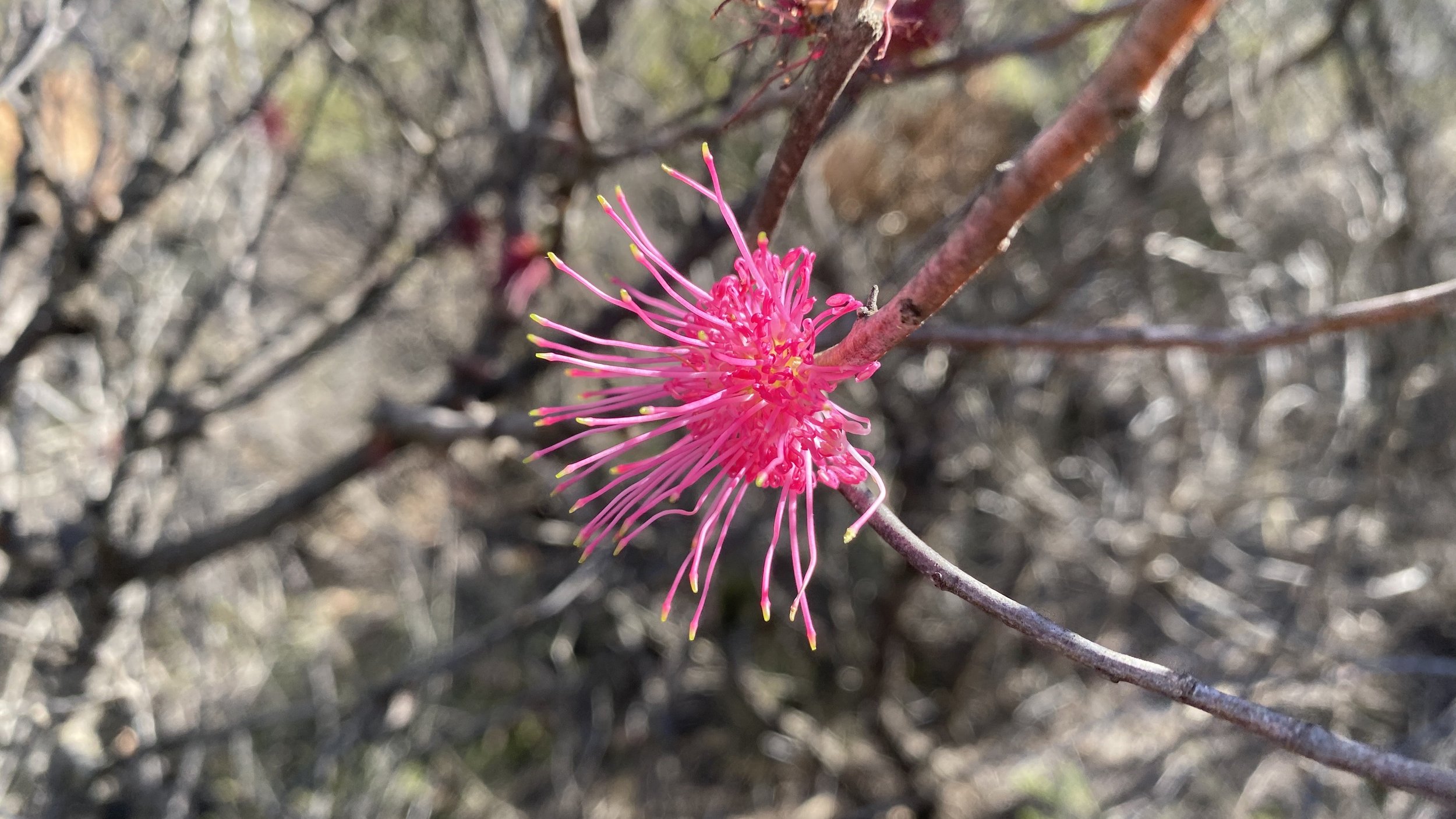Wildflowers, Resilience & Wellness
Hakea by West Australian artist Lori Pensini.
I hope you are blessed with a heart like a wildflower.
Strong enough to rise after being trampled upon,
tough enough to weather the worst of the storms.
Able to grow and flourish even in the most broken places.
Nikita Gill
We will all experience adversity.
Chronic illness or injury, economic hardship, betrayal or deceit, the loss of people you love, rejection.
How well do you handle unexpected changes?
How do you react to many years of chronic autoimmune disease nobody knows how to treat?
Or you suddenly lost your home and all possessions in a fire?
Or finding out you’ve married an abusive narcissist?
Resilience
What does being resilient mean to you?
Is it about being flexible in the way we think and act so we can take the blows, cope, and bounce back?
Or like the Japanese poet quoted below, is it an ability to reframe the catastrophe or change the narrative with a lens of optimism?
My barn having burned down,
I can now see the moon.Mizuta Masahide - 17th century Japanese poet and samurai
Are you the ‘get lemons, make lemonade’ type?
Maybe you’re not surprised when obstacles occur because, like the Stoics and Buddhists, you know ‘shit happens’, right?
Through my perspective as a researcher in transformative learning and a creative problem solving practitioner, resilience is a process initiated by unexpected challenges.
These challenges lead to behaviours, feelings, new perspectives, and creativity.
In turn, we are able to ‘recover’ through adaptation, ‘innovation’, and ultimately, personal growth and transformation.
The idea that if we are resilient we are able to just cop a punch, spit out a tooth and simply ‘bounce back’ into action like an elastic Mrs Incredible, is flawed.
We’re not made of rubber or polyurethane.
We might still collapse in a heap, come undone, retreat, grieve, spend weeks in bed, hit rock bottom before being able to see, understand and take action to regroup, recover and resurface.
3 ways to build resilience.
Being naturally flexible, strong, adaptable, highly capable of positively reframing problems, and/or as stoical as Marcus Aurelius (or Tim Ferris) can add to our ability to be resilient.
But here are 3 factors that according to research also contribute greatly to our ability to face challenges and grow.
“It's always better when we're together.” – Jack Johnson.
Strong and authentic social relationships - our family & friends, colleagues, anyone who we interact with from a place of authenticity and who we allow to see us and appreciate us for who we are and vice versa.
Sharing time with people we care about and who we know care about us helps create strong social bonds that can help us overcome really difficult challenges."He who has a why to live can bear almost any how." Friedrich Nietzsche
Living with purpose - feeling fulfilled and aligned with our values and our talents is repeatedly found to make us resilient to adversity.
Which means we need awareness and self-knowledge so we can let ourselves try and cultivate activities and pursue what makes us happy.
These may change over time, so we also being able to let go and being open to trying on the new.“Those who contemplate the beauty of the earth find reserves of strength that will endure as long as life lasts.” Rachel Carson
Spending time in nature - how many more studies need to be carried out and published to show that spending time in nature makes us healthier and literally changes the chemistry of our bodies?
Listening to nature, watching sunsets and sunrises, walking among trees and wildflowers have been found to reduce stress hormones, increase happy chemicals, increase cancer fighting cells, and overall heal us.
Resilience is not only how we survive, it’s how we thrive.
It’s an integral process of our evolution.
Without resilience we perish.
Just take a look at the evolution and diversification of other organisms, like wildflowers.
Wildflowers
Hakea victoria - Royal Hakea - Fitzgerald River National Park
The wildflowers of Western Australia are the epitome of resilience, don’t you think?
The Hakea victoria - Royal Hakea (pictured above) is an endemic plant found in the Fitzgerald Biosphere, one of 738 UNESCO listed reserves around the world containing significant biodiversity.
Along with Grevilleas & Banksias, Hakeas belong to the Proteaceae family which dominates and contributes to the extraordinary diversity of Australia’s southwest.
Proteaceae are believed to have arrived in the southwest around 100 million years ago, Hakeas around 18 million years ago.
Like so many of the 8,000 plant species found in this small corner of Australia, its survival has depended on millions of years of resilience, adaption and diversification.
Faced with soils poor in Phosphorus and other nutrients Hakea Victoria (like other Proteaceae) evolved specialised roots (called proteoid roots) that grow from the side of the main roots when it rains. As they grow, and as the water decomposes dead leaves under the plant, they absorb the nutrients and moisture from the leaves.
How is that for creative problem solving?
Faced with the destructive effects of extreme drought and heat Hakea victoria have evolved leaves that are rough, thick and hard like leather, with spiny edges and sharp points, they’re cupped with thick veins and they grow up along a stem that is rigid. This reduces loss of moisture.
In addition, the plant will sacrifice a part of its body, so that the plant survives. Often a plant will display blackened dead stems and leaves, while the rest of the plant is healthy and intact.
That’s resilience.
Faced with the regular occurrence of fire Hakea Victoria (like most hakeas) develops a hard, woody nut that contains the seeds which are released after fires.
And that is innovation.
Hakea cucullata (Scalloped Hakea) Stirling Range National Park
Hakea obtusa - Ravensthorpe Range
Diversifying to adapt and cope with poor soils, heat, drought and fire, our native flora has been able to take blow after blow and evolve into organisms that support a myriad of others organisms.
Wildflowers tell us a 100-million-years story of resilience, adaptation, recovery and survival.
Wellness
If country is not well, we can’t be well.
And we want to be well.
Desperately.
This is clear from the proliferation of a multi-billion dollar ‘wellness industry’ encompassing everything from real estate to tourism.
But it doesn’t matter if we live in homes that are designed to filter in the purest, most oxygenated air, or use clothing that is made from toxic-free dyes, or pay top price for nature holidays full of massages, facials and yoga.
If our natural environment & its biodiversity continues to be exploited and destroyed we can’t be well.
We can have all the massages, facials, and ice baths we like but if our business models do not consider the damage they do, then nothing will make us well.
And we have to be well to be resilient.
Look at the wildflowers below.
It makes me well, just looking at them.
But imagine if one day, and that’s where we’re heading, when looking at pictures of them is all we’ll be able to do.
Ledesma, J. (2014). Conceptual frameworks and research models on resilience in leadership. Sage Open, 4(3), 1–8.











